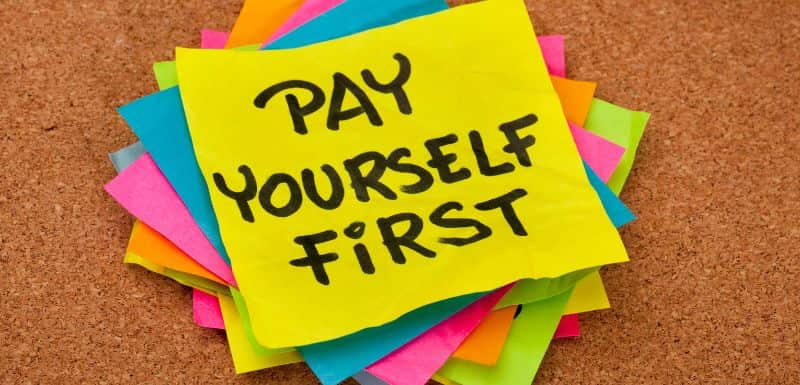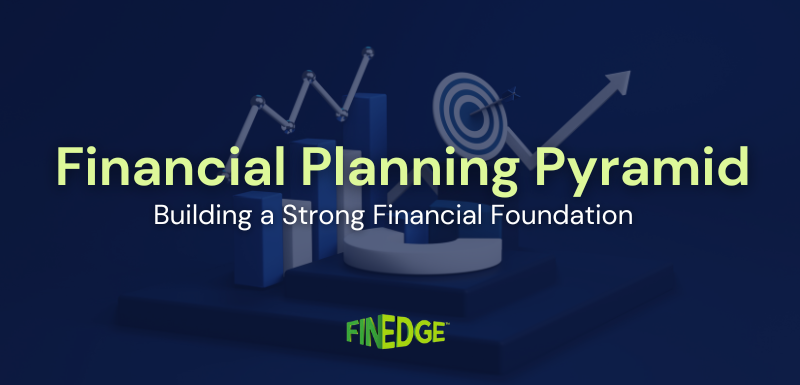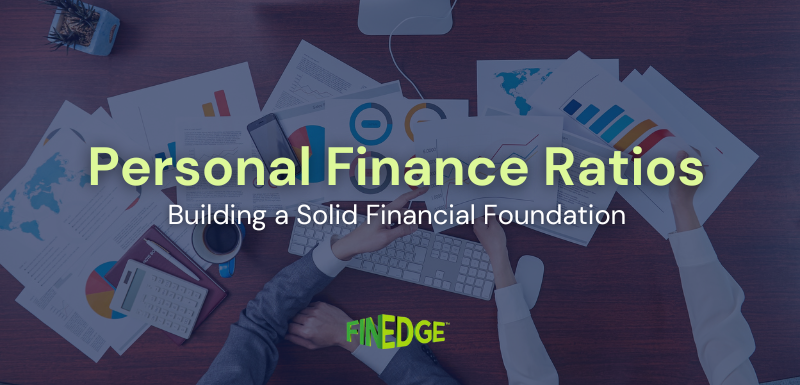Pay Yourself First Budgeting: Can It Help You Achieve Financial Goals Faster?

In today's world, with most things available at the click of a button, some people prefer instant gratification for most things. If you earn enough income to fulfill all your desires and invest towards your financial goals, you may continue to enjoy instant gratification.
Instant Gratification VS Delayed Gratification
In today's world, with most things available at the click of a button, some people prefer instant gratification for most things. If you earn enough income to fulfill all your desires and invest towards your financial goals, you may continue to enjoy instant gratification. However, if your income is limited, you may have to prioritize investments towards financial goals and push some of your desires to a later date, resulting in delayed gratification. In this article, we will understand how to prioritize investing towards financial goals through the Pay Yourself First budgeting method and achieve goals faster.
What Is Pay Yourself First?
The Pay Yourself First Budgeting method prioritizes investing towards financial goals over spending towards needs and wants. Most people focus on the following equation:
Income – Expenses = Savings and Investments
However, the Pay Yourself First method flips this equation as follows:
Income – Savings and Investments = Expenses
In the Pay Yourself First strategy, an individual first allocates a part of their income towards all savings and investments. Once the savings and investments for the month are taken care of, the remaining income is spent towards needs and wants. Thus, the budgeting strategy ensures that investments towards financial goals are taken care of before diverting money towards expenses.
Now that we understand what is Pay Yourself First budgeting, let us look at how to create it.
How to Create a Pay Yourself First Budget?
As important step in the Pay Yourself First budget creation process is doing an individual’s financial health check. It involves analysing the various financial ratios to understand the individual’s cash inflows, how much is going towards repaying debts, how much is left for investing towards financial goals, etc. Let us look at three important ratios as follows.
1) Reserve to Surplus Ratio
It is the percentage of income that you are not spending. To start with, your reserve to surplus ratio should be at least 20%. If it is less than 20%, you need to analyse your expenses and check where to cut down.
If it is at 20% or slightly higher, over a period of time, as your income increases, you should try and take the ratio higher. The higher the reserve to surplus ratio, the better in planning and implementing the Pay Yourself First budgeting.
2) Savings to Surplus Ratio
In the above section, we saw how you should work towards a good reserve to surplus ratio. However, just having a good reserve to surplus ratio is not enough. You should invest this money towards your financial goals. Aim for a savings to surplus ratio of more than 75%. Investing through the systematic investment plan (SIP) mode ensures that savings are automatically channeled into investments.
3) Debt to Income (DTI) Ratio
The DTI ratio measures the percentage of income going towards paying debt. A higher DTI leaves less money for expenses and savings. If your DTI is higher, you should work towards bring it down to create room for allocating more money towards savings and investments.
While the above three ratios are important, the financial health check can involve other personal finance ratios.
Once the financial health check is completed, the next step is to list all the financial goals and make a goal plan for each. The individual should allocate money to each financial goal. Whatever money remains after that can be used for expenses towards needs and wants.
Implementing a Pay Yourself First Budget
Once the goal plans are ready and the money has been allocated, the next step is implementing the Pay Yourself First Budget. You can start investing in mutual funds through the systematic investment plan (SIP) route. As the SIPs are automated, you can keep the SIP date one to two days after you receive the monthly income. As soon as the SIPs are done, the individual is free to spend the remaining money on needs and wants. SIPs make you a disciplined investor by making regular investments for the long term.
You can opt for step-up SIPs that allow you to increase the monthly SIP amount by a specified percentage or a specified amount on an annual basis. For example, you can opt for a step-up SIP with a 5 to 10% annual increment, which is in line with the annual increase in income for most individuals. A step-up SIP can help you achieve your financial goals faster than a regular SIP.
Should You Use the Pay Yourself First Method?
The Pay Yourself First budgeting method highlights the importance of saving first towards financial goals and spending later. There is a high probability that you will achieve all your financial goals if you follow this strategy. However, not every one is prepared mentally to accept the concept of saving first and spending later.
As savings get priority over spending, the individual will have to live a frugal life if the income is not adequate. They will have to sacrifice certain wants in the short term to allocate money towards financial goals. Not everyone is going to do that. Hence, Pay Yourself First budgeting is not for everyone.
If you are completely focused on achieving your financial goals at any cost, you may adopt Pay Yourself First budgeting. Else, you may opt for other budgeting methods like 50/30/20 budgeting or other methods.
Pros and Cons of Pay Yourself First Budgeting
The biggest pro of Pay Yourself First budgeting is that it prioritizes savings and investments towards financial goals. Once this is taken care of, the remaining money can be used for monthly expenses. So, the budgeting method ensures that individuals move towards their financial goals faster than other budgeting methods.
The biggest con of Pay Yourself First budgeting is that if the monthly income is limited, discretionary spends take a backseat as savings and investments get priority. As a result, the individual may be forced to live a frugal life, which may demotivate them.
Pay Yourself First Budgeting Ensures a Smooth Financial Planning Journey
As the Pay Yourself First budgeting method prioritizes savings and investments, there is a high probability of achieving financial goals. With this method, you can be sure the monthly investments will be made without delays. If the income is inadequate, you may have to go for delayed gratification instead of instant gratification for certain wants. However, it may be worth it as you will be satisfied with achieving your financial goals and the much-needed peace of mind.
FAQs
What Are the Different Budgeting Types Apart From Pay Yourself First Budgeting?
Some of the budgeting types include the following.
1. 50/30/20 budgeting: Allocates 50% of income to wants, 30% to needs, and 20% to savings and investments towards financial goals
2. Zero budgeting: Allocates income towards expenses in such a manner that income minus expenses results in zero.
3. Envelope budgeting: Allocates money towards expenses by putting cash in different envelopes spread across spending categories.
Why Is Pay Yourself Budgeting Also Known as Reverse Budgeting?
All budgeting methods, except for Pay Yourself First budgeting, follow the equation: Income – Expenses = Savings and investments. However, the Pay Yourself First budgeting reverses this equation as follows: Income – Savings and Investments = Expenses. As the Pay Yourself First budgeting method reverses the traditional budgeting equation, it is also known as reverse budgeting.
Will the Pay Yourself First Budgeting Work if an Individual Has High Debt?
Pay Yourself First budgeting is unlikely to work for people with high debt. In such cases, if the individual prioritizes investing towards financial goals over debt repayment, it can lead to a debt trap. Hence, such individuals should first focus on debt repayment. Once the debt is fully repaid or most of it is repaid, they can shift their focus to Pay Yourself First budgeting.
Your Investing Experts
Relevant Articles
Understanding the Financial Planning Pyramid: Building Your Finances the Right Way
Most people juggle several financial goals at once, an emergency fund, retirement planning, a child’s education, or even short-term lifestyle goals like travel. Without a proper framework, it becomes difficult to decide what to tackle first. The Financial Planning Pyramid offers a simple and effective way to bring structure to your financial life. It ensures that essential protections are in place before you start saving and investing for long-term wealth.
Personal Finance Ratios You Should Understand Before You Start Investing
Successful investing begins long before you pick funds or set return expectations. It starts with understanding your financial foundation, how much you earn, how much you spend, and how much is left to invest consistently. These simple but powerful personal finance ratios offer a clear view of your financial health and help you make informed, goal-aligned decisions.
How to Categorise Financial Goals: Short, Medium, and Long-Term Goals Explained
Before we get into strategies and structures, it’s important to understand the value of categorising financial goals. Every individual has a unique set of aspirations, but not all goals carry the same urgency or impact. By breaking them down clearly, you can build a systematic, purpose-driven investment plan tailored to your life.



.jpg)